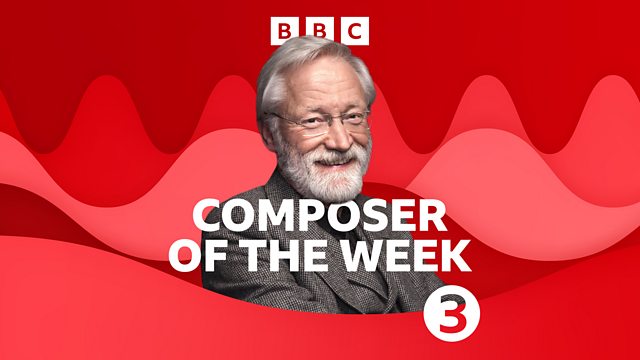
Adagio for Strings
Donald Macleod explores Samuel Barberβs early beginnings as a composer during the 1930s.
Donald Macleod explores Samuel Barberβs early beginnings as a composer during the 1930s.
Composer of the Week explores the life and music of Samuel Barber, who is only considered one of the most expressive representatives of the Romantic trend in 20th-century classical music, as well as one of the most frequently performed American composers. His most famous score is his early Adagio for Strings; some of his other breakthrough include his Piano Sonata, and the opera Vanessa.
Barber began studying piano from the age of six and started to compose from the age of seven. He went on to take composition lessons with Rosario Scalero at the Curtis Institute of Music and, from this point, he never looked back, quickly becoming one of Americaβs most famous composers. He wrote in many different genres, including chamber, vocal, orchestral and works for the stage, and often composed in response to significant and highly desirable commissions. He enjoyed close collaboration with the performers he wrote for, shaping his music to their individual styles and capabilities. Only towards the end of his life, when he was struggling with depression, alcoholism and also cancer, did his creative output slow.
In the early 1930s, Samuel Barber was studying at the Curtis Institute in Philadelphia. Heβd originally auditioned as a pianist, and studied singing and composing too. As time went on, composing would prove to be the biggest attraction for him. One work he composed towards the end of his studies was Dover Beach, which has gone on to be regularly performed and recorded. During this period, Barber met fellow composer, Gian Carlo Menotti and they began a forty-year romantic relationship. It was whilst travelling around Italy with Menotti that Barber worked on his Cello Sonata. Another work composed on a European sojourn would become Barberβs most famous works, his Adagio for Strings. It became Barberβs calling card, and augured well for a composer at the start of his career.
Overture to The School for Scandal
New York Philharmonic
Thomas Schippers, conductor
Dover Beach, Op 3
Roderick Williams, baritone
Coull Quartet
Cello Sonata, Op 6 (Adagio - Presto)
Sheku Kanneh-Mason, cello
Isata Kanneh-Mason, piano
Sure on this shining night, Op 13 No 3
Samantha Clarke, soprano
Dylan Perez, piano
Nocturne, Op 13 No 4
Samantha Clarke, soprano
Dylan Perez, piano
Adagio for Strings, Op 11
Berlin Philharmonic Orchestra
Simon Rattle, conductor
Violin Concerto, Op 14 (excerpt)
Johan Dalene, violin
Norrkoping Symphony Orchestra
Daniel Blendulf, conductor
Produced by Luke Whitlock
Last on
More episodes
Previous
You are at the first episode
Music Played
-
![]()
Samuel Barber
The School for Scandal, Overture
Orchestra: New York Philharmonic. Conductor: Thomas Schippers.- SONY : 62837--.
- SONY.
- 4.
-
![]()
Samuel Barber
Dover Beach, Op 3
Singer: Roderick Williams. Ensemble: Coull String Quartet.- SOMM : CD0654.
- SOMM.
- 12.
-
![]()
Samuel Barber
Cello Sonata, Op 6 (Adagio - Presto)
Performer: Sheku KannehβMason. Performer: Isata KannehβMason.- DECCA : 485-163-0.
- DECCA.
- 2.
-
![]()
Samuel Barber
Songs, Op 13 (No 3, Sure on this shining night; No 4, Nocturne)
Performer: Dylan Perez. Singer: Samantha Clarke.- RESONUS : RES-10301.
- RESONUS.
- 9.
-
![]()
Samuel Barber
Adagio for Strings, Op 11
Orchestra: Berliner Philharmoniker. Conductor: Sir Simon Rattle.- WARNER : 6872862.
- WARNER.
- 1.
-
![]()
Samuel Barber
Violin Concerto, Op 14 (excerpt)
Performer: Johan Dalene. Orchestra: NorrkΓΆpings Symfoniorkester. Conductor: Daniel Blendulf.- BIS : 24-40.
- BIS.
- 5.
Broadcast
- Mon 17 Jul 2023 12:00ΒιΆΉΤΌΕΔ Radio 3
Vaughan Williams Today
Beethoven Unleashed β the box set
What was really wrong with Beethoven?
Composers A to Z
Who knew? Five eye-opening stories from Composer of the Week
Five reasons why we love Parry's Jerusalem
What is the strange power of Jerusalem which makes strong men weep?
A man out of time β why Parry's music and ideas were at odds with his image...
The composer of Jerusalem was very far from the conservative figure his image suggests.
Composer Help Page
Find resources and contacts for composers from within the classical music industry.






